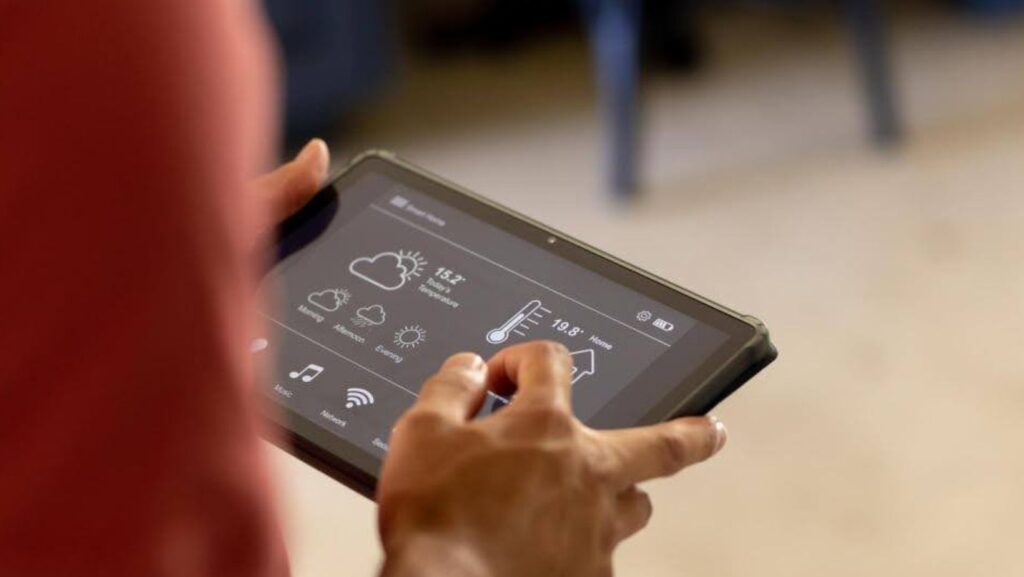The way we fuel our homes is changing, shifting from static grids and siloed systems to dynamic, intelligent ecosystems. Think of your house as optimizing the use of renewable energy, feeding power to the grid when it is abundant, and handling the load with efficiency — all in a harmonized way. That dream is not too distant. When paired with a bidirectional charging infrastructure, solar, and storage, coupled with integrated home energy management systems, homeowners can achieve real resilience, cost savings, and sustainability in a single system.
What Is Bidirectional Charging—and Why It Matters
Two-way charging (Vehicle-to-Home or Vehicle-to-Grid interaction) can be used where electric vehicles (EVs) can not only consume electricity but also feed any surpluses back to your house or the grid. Procedurally, it is like this:
- Your vehicle’s battery can serve as a backup source of energy overnight when the electricity is out.
- When demand is at high levels, they can inject energy into your house or, in some systems, into the grid, thereby decreasing peak billing or earning incentives.
- The feature will transform your EV into a mobile battery, enabling optimal usage and increased independence from the grid during periods of higher electricity prices.
Solar + Smart Management: Making the Most of Every Watt
A combination of solar panels and a home energy management system can offer a real-time display and manage energy flows:
- Intelligent routing of solar energy- to your house, electric car charger, and your home, or even to the grid itself.
- Load-shifting automation, so that when the output of solar generation is at its best, your dishwasher or heat pump is running.
- Monitoring efficiency enables you to know exactly where electricity is being used and what behavior it is exhibiting.
- Panels, along with visibility and automation, you have solar that is more than just the panels — it becomes an active part of your everyday energy choices.
How Integration Transforms Home Energy Dynamics
When bidirectional charging, solar, and intelligent systems converge, the benefits compound:
| Feature | Advantage |
| Demand Smoothing | EV battery can discharge during peak hours, reducing grid dependence |
| Backup Resilience | During outages, stored solar or vehicle energy keeps essentials running |
| Cost Savings | High-use tasks are scheduled when solar or vehicle power is available |
| Grid Support | You can feed surplus energy back during critical demand periods, for potential compensation or credits |
Essentially, your home becomes a mini smart microgrid, balancing production, storage, and consumption in real time.
What Homeowners Should Know Now
Hardware compatibility: Have your EV, charging station, inverter, and energy management system compatible with bidirectional energy voltages.
- Regulatory certainty: Québec and Ontario have grid interconnection regulations and generally applicable forms of compensation. Verify local utility policy before integrating.
- System design: Specify the size of solar and battery systems based on your usage needs (how much you use, how you use electricity in your home, and how long you need to maintain backup during a power outage).
- Scalability: Start with an entry-level solar system and intelligent monitoring, and integrate with EV and bi-directional capabilities over time as your requirements evolve.
Stepped roll-out also aids in the dissemination of an investment and testing, whereby every constituent will be worked out before the addition of complexity.
Real-World Example: The Smart Energy Home in Action
Think of a sunny morning in the country on a weekend:
The power obtained from solar energy is used to power lights, a fridge, and a laundry machine.
Superfluous energy loads your EV.
It is midafternoon, and clouds pass by — your controller diverts the energy from the car to fill the charging cup.
Peak charging occurs in the evening, when power is drawn from your EV or home battery, rather than from expensive grid resources.
Should the grid come asunder, your system maintains a bare minimum power to get you through the night.
All this is automatic, requiring minimal input through built-in systems and intelligent controls.
Partnering with Experts for Smarter Home Energy
At E3 Electricity, we understand that solar, bidirectional charging, and home energy management extend beyond simply installing a system that you can personalize in your unique way, tailored to your specific energy requirements and goals.

We work with homeowners to ensure all elements of their machinery, such as EV chargers and solar inverters, are in good order, compatible, efficient, and accessible for any future repairs. Want to start with a solar panel? Start with vehicle-to-home, or a whole smart microgrid? We can facilitate all of this with expert experience, high-quality installation, and local expertise that can make your home more resilient, cost-effective, and sustainable.
Conclusion
The future of home energy is not a choice between solar investment, bidirectional charging, or innovative management systems, but rather their convergence to achieve the benefits of savings, resilience, and sustainability. Through the evolution of technology and regulation, homeowners can remodel their homes to create proactive, intelligent energy systems that benefit the owners and, in turn, support the grid.
Your move: Want to know about installing solar or bidirectional charging in your system–or engineering a more intelligent, more efficient home energy system? Leave your most burning questions or interests in the comments below!


